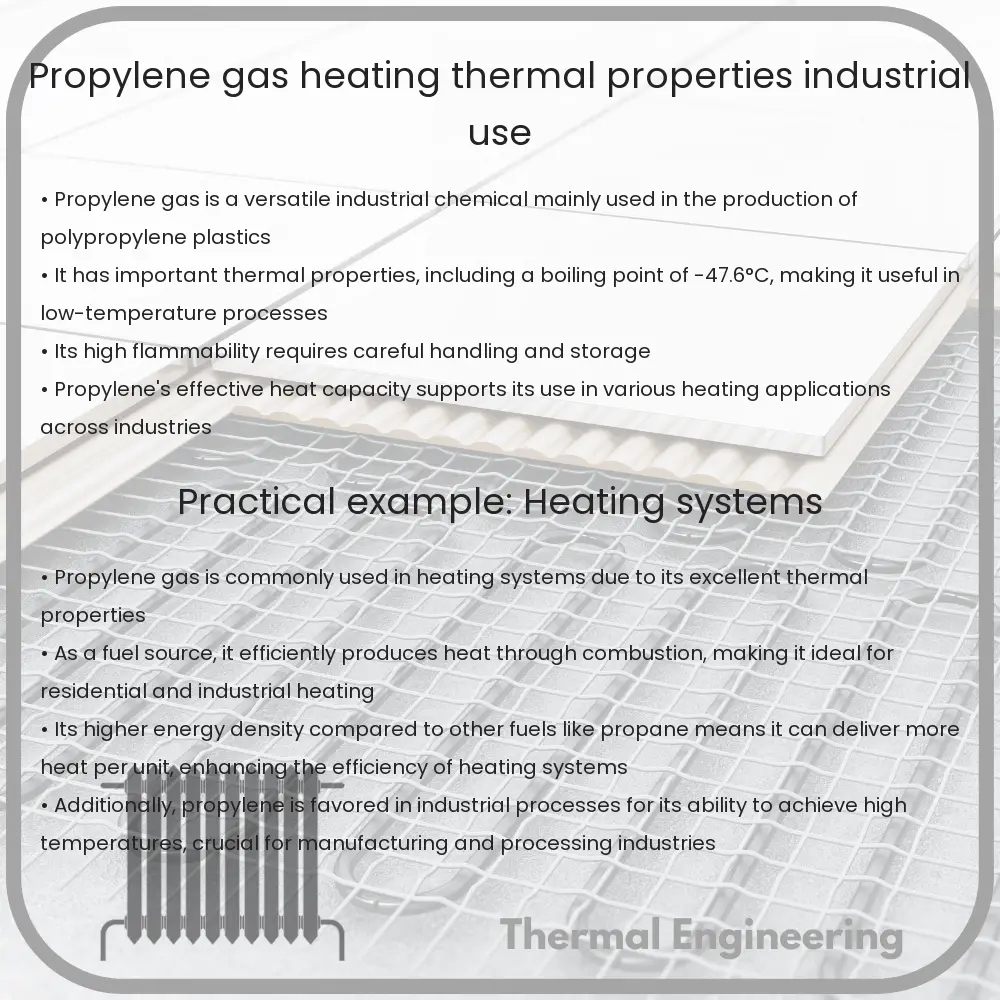Learn about propylene gas, covering its heating characteristics, thermal properties, and diverse industrial applications.

Understanding Propylene Gas: Heating, Thermal Properties & Industrial Use
Propylene, also known as propene or methyl ethylene, is a colorless, flammable gas with a faint petroleum-like odor. As a fundamental building block in the chemistry of various synthetic materials, it holds significant industrial importance. In this article, we will explore the heating characteristics, thermal properties, and widespread industrial applications of propylene gas.
Thermal Properties of Propylene
Propylene is categorized as an alkene with the molecular formula C3H6. It exhibits several important thermal properties that are crucial for its use in industrial applications:
- Boiling and Melting Points: Propylene has a boiling point of about -47.6°C and a melting point of about -185.2°C.
- Heat of Combustion: The gas releases a considerable amount of energy during combustion, characterized by its higher heating value (HHV) of approximately 48.95 MJ/kg and a lower heating value (LHV) of around 46.35 MJ/kg.
- Thermal Conductivity: At room temperature, propylene has a thermal conductivity of about 0.0175 W/m∙K, which influences how it transfers heat energy through the material.
- Specific Heat Capacity: The specific heat capacity at 25°C is about 1.48 kJ/kg∙K, indicating the amount of heat necessary to raise the temperature of one kilogram of propylene by one Kelvin.
These thermal properties are fundamental when considering propylene for various heating applications and processes in industries.
Heating Applications of Propylene
Due to its energy-rich nature, propylene is extensively used as a fuel gas in industries. It offers advantages such as a high flame temperature and moderate combustion speed, making it suitable for:
- Oxy-fuel Welding and Cutting: Propylene is often utilized as an alternative to acetylene in cutting and welding applications because it can produce a similar flame temperature, effectively cutting metals like steel.
- Heating Furnaces: In steel-making and metal-working industries, propylene is used in furnaces where high temperatures are necessary for processes like annealing, tempering, and heat treatment.
Industrial Uses of Propylene
The versatility of propylene extends beyond its thermal applications. It is a key raw material in the production of numerous chemical compounds and products:
- Polypropylene Manufacture: Propylene is polymerized to form polypropylene, a widely-used plastic found in packaging, automotive parts, textiles, and consumer goods.
- Propylene Oxide Production: Propylene is a primary feedstock for producing propylene oxide, an essential component in the production of polyether polyols, which are used in making polyurethane plastics.
- Acrylonitrile and Cumene Production: It is also used to produce acrylonitrile and cumene, which are intermediates in the manufacture of acrylic fibers, plastics, and other industrial chemicals.
In summary, propylene gas is a critical component in various heating applications due to its excellent combustion characteristics and thermal properties. Additionally, it is indispensable in numerous industrial chemical processes, making it a key commodity in the global market. Understanding the fundamental aspects of propylene helps in optimizing its use and enhancing safety measures during its application in various industries.